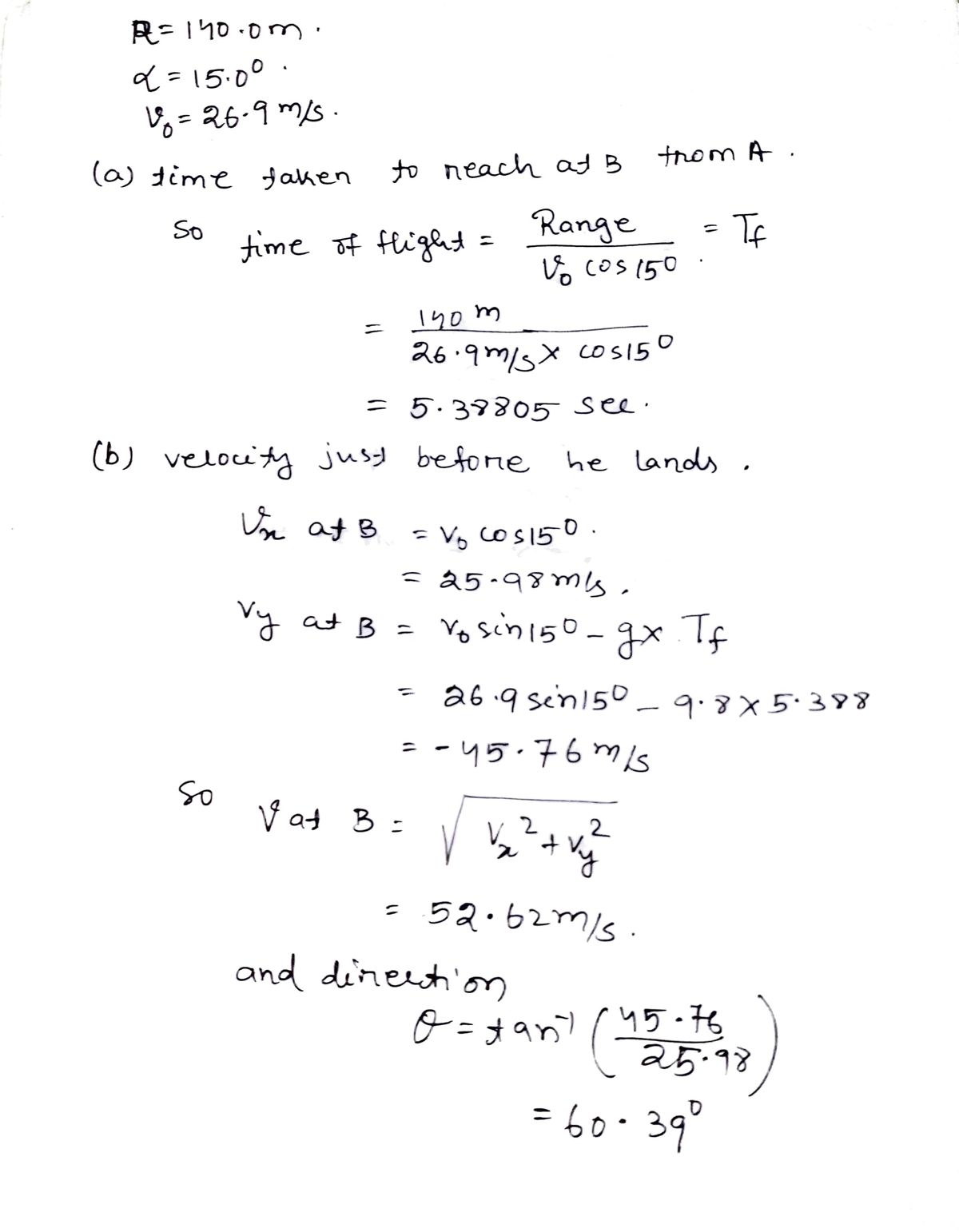4. (From an old exam) In the 2006 Winter Olympics, Thomas Morgenstern of Austria won a gold medal in one of the ski jumping events; his longest jump was R = 140.0 m. The picture below shows a simplified diagram of his jump. (It's not to scale.) 150 140 m He takes off from point A at an angle of a = 15.0° above the horizontal, with an initial speed v0 = 26.9 m/s. The dotted curve roughly shows his trajectory; he lands at point B. Notice that the landing hill is curved, and is quite steep near point B. You should ignore air resistance in this problem. a) How long is he in the air? (That is, how long does it take him to get from A to B?) b) Find the magnitude and direction of his velocity just before he lands at B. c) Based on your answer to part (b), explain why it is safer for ski jumpers to land on a steep slope than on a flat surface. (Hint: a large sudden change in velocity requires a large impact force.)
4. (From an old exam) In the 2006 Winter Olympics, Thomas Morgenstern of Austria won a gold medal in one of the ski jumping events; his longest jump was R = 140.0 m. The picture below shows a simplified diagram of his jump. (It's not to scale.) 150 140 m He takes off from point A at an angle of a = 15.0° above the horizontal, with an initial speed v0 = 26.9 m/s. The dotted curve roughly shows his trajectory; he lands at point B. Notice that the landing hill is curved, and is quite steep near point B. You should ignore air resistance in this problem. a) How long is he in the air? (That is, how long does it take him to get from A to B?) b) Find the magnitude and direction of his velocity just before he lands at B. c) Based on your answer to part (b), explain why it is safer for ski jumpers to land on a steep slope than on a flat surface. (Hint: a large sudden change in velocity requires a large impact force.)
Related questions
Question
4 B & C only please, show work

Transcribed Image Text:4. (From an old exam) In the 2006 Winter Olympics, Thomas Morgenstern of Austria won a gold medal in one
of the ski jumping events; his longest jump was R = 140.0 m. The picture below shows a simplified diagram of
his jump. (It's not to scale.)
140 m
B
He takes off from point A at an angle of a = 15.0° above the horizontal, with an initial speed vo= 26.9 m/s.
The dotted curve roughly shows his trajectory; he lands at point B. Notice that the landing hill is curved, and is
quite steep near point B.
You should ignore air resistance in this problem.
a) How long is he in the air? (That is, how long does it take him to get from A to B?)
b) Find the magnitude and direction of his velocity just before he lands at B.
c) Based on your answer to part (b), explain why it is safer for ski jumpers to land on a steep slope than on
a flat surface. (Hint: a large sudden change in velocity requires a large impact force.)
CONTINUED ON NEXT PAGE
Expert Solution
Step 1

Step by step
Solved in 2 steps with 1 images
